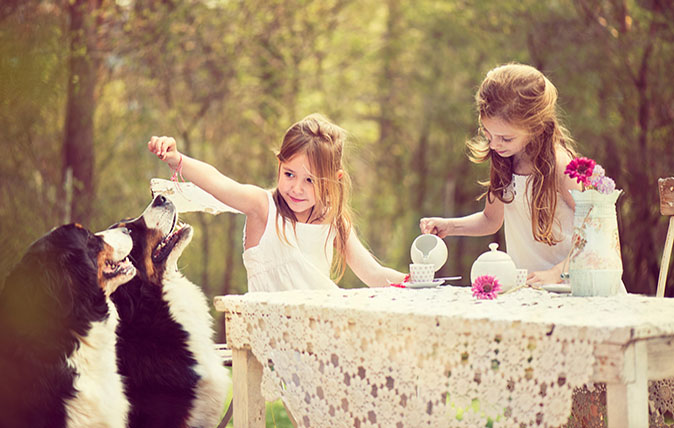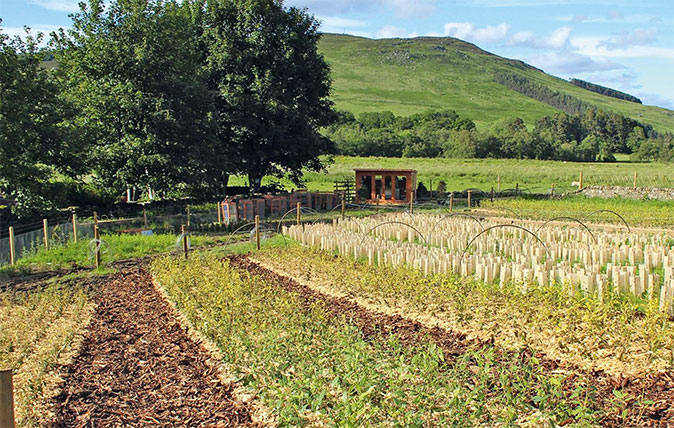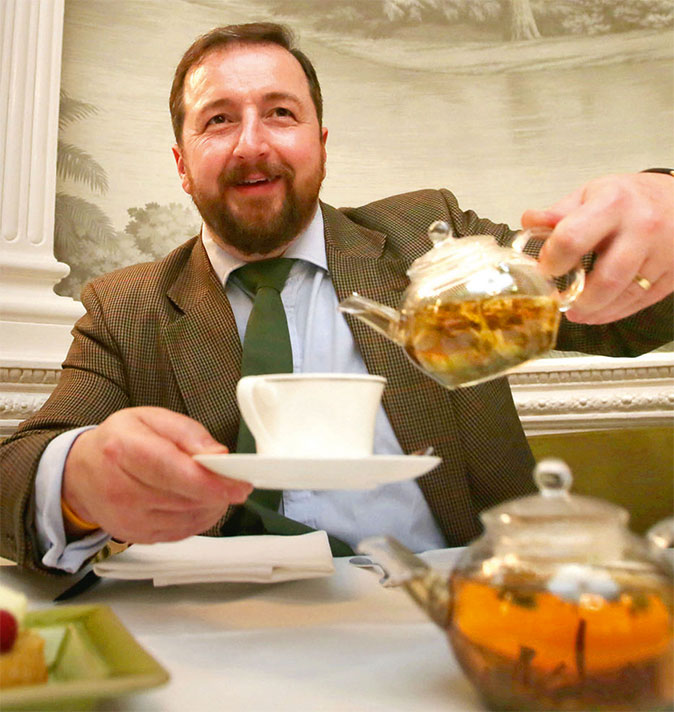Try a cup of finest tea, as grown in... Scotland?
Tea grown in Scotland? Absolutely. Kevin Pilley talks to the man creating a storm in a teacup.


Tam O’Braan spent four years living on a canoe in the Amazon, was bitten by a deadly snake in Brazil and was shot at on the Thailand-Burma border – all of which have prepared him nicely for his current challenge: producing Scotland’s first tea.
‘Tea thrives in fairly hostile conditions. Price is determined by quality and largely determined by stress, which the Scottish weather amply provides,’ he grins.
Tea-growing over the border is not a new idea – during the Second World War, there were plans to plant tea in Scotland, spurred by Churchill, who believed a cup of tea to be ‘fundamental to British morale’.
It may not have come into fruition then, but it certainly has now – Mr O’Braan’s Dalreoch White is one of the most expensive and best teas in the world, retailing at £35 a 15g tin at Fortnum & Mason. The Dorchester’s traditional afternoon tea also now includes a variety of Dalreoch teas, available for an additional £12 supplement.
With the Wee Tea Company at Dalreoch – Gaelic for ‘Field of Kings’ – in Perthshire, going from strength to strength, Mr O’Braan has planted a new tea garden in Jedburgh and, in September, he will be busy planting up the world’s most northerly tea estate in Orkney.

His efforts have also inspired new enthusiasts – the Scottish Tea Growers’ Association, founded by Mr O’Braan, has 12 members and represents the world’s youngest tea estates.
Member Angela Hurrell produces Monarda-scented Garrocher Grey, a tea that was given out at this year’s RHS Chelsea Flower Show and is the first Scottish-grown tea to be relocated to England, now springing up on The Dorchester’s rooftop tea terrace.
Exquisite houses, the beauty of Nature, and how to get the most from your life, straight to your inbox.
Fellow member Liz Gibson, a minister of the Church of Scotland, offers tea-picking breaks at her croft on Mull, producing Isle of Mull Matcha tea, as well as Scottish Antler – ‘it’s not really made from deer,’ Mr O’Braan laughs. ‘Just a catchy name to keep spreading the brews.’ Antler Tea was also presented to Barack Obama as a gift from First Minister Nicola Sturgeon during her 2015 visit to the US. New grower Elma Ball at Bohall Farm in Dumfriesshire is planning to experiment with peony tea.

Although India, Sri Lanka, Kenya and China grow 75% of the world’s tea, Scotland has long been involved in the industry. Clippers were built on the River Clyde – Cutty Sark, launched in 1869, brought tea back from the Far East – and Scots planted most of Darjeeling’s tea estates. Furthermore, Kincardineshire’s James Taylor and the Glaswegian Sir Thomas Lipton created the Sri Lankan (Ceylonese) tea industry, famously planting the first seedlings of Ceylon tea in the Loolecondera estate in 1867.
Mr O’Braan – who studied tea culture in Wuyan, China, before travelling to Taiwan to study growing – was personally inspired by 19th-century Berwickshire botanist, plant hunter and probable spy Robert Fortune, imprisoned for tea smuggling.
‘Fortune literally put his life on the line for the tea cause,' says Mr O'Braan. 'He stuck his neck out big time. He was convinced tea could be cultivated outside China and he was proven to be right. Growing techniques in modern agronomy have made his theories a reality.’
Dalreoch currently has 14,000 plants under cultivation over 14 acres, where an old stable has been transformed into a solar-powered processing unit. The tea, grown from seedlings sourced from the ancient tea region of China’s Yunnan hills and planted by the 14-strong Dalreoch team, is smoked with locally felled beech wood.
After 18 months in heated greenhouses, the fledgling bushes are planted out, with the first flush of leaves being picked four years later in the harvesting season that starts in February and ends in September.

‘The soil needs to be neutral and well-aerated, with a lot of preparation spent on drainage,’ explains Mr O’Braan, pointing out that his estate is 2,460ft above sea level. ‘Camellia sinensis doesn't enjoy a wet root.’
Mr O’Braan believes that the Scottish climate is an advantage because, due to lower temperatures and slower growth, the resulting teas develop deeper flavour profiles. ‘You don’t need heat to grow high-quality tea. The original varieties were grown in the Himalayan foothills in seriously sub-zero temperatures. Low cloud cover and frequent rain are ideal for tea. Here in Perthshire, we also have rich soil and a mountain stream.’
Once harvested, the leaves and shoots are processed on-site to become black, white or green tea. ‘Our aim is to replicate the success of whisky by growing top-grade beverages in different places, each with their own distinct flavours and personalities. One day, Scottish tea plantations will have visitor centres offering tastings of cuppas rather than drams,’ Mr O’Braan concludes with a smile.

The Wee Tea Company, Izatt Avenue, Dunfermline, Scotland – 07860 933832; www.weeteacompany.com
Country Life is unlike any other magazine: the only glossy weekly on the newsstand and the only magazine that has been guest-edited by His Majesty The King not once, but twice. It is a celebration of modern rural life and all its diverse joys and pleasures — that was first published in Queen Victoria's Diamond Jubilee year. Our eclectic mixture of witty and informative content — from the most up-to-date property news and commentary and a coveted glimpse inside some of the UK's best houses and gardens, to gardening, the arts and interior design, written by experts in their field — still cannot be found in print or online, anywhere else.
